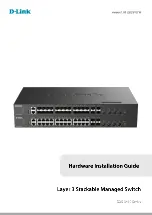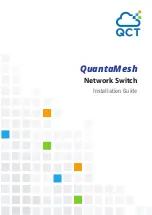
DXLink Fiber Input & Output Boards
137
Enova Digital Media Switchers - Hardware Reference Manual
NOTE:
Duplex boards/units support bidirectional control over fiber. Simplex boards/units do not support EDID transfer and
control transport (such as Ethernet, USB, IR, and Serial Control) over fiber; although when used as part of a complete
Enova DGX solution, control can be provided if a supplemental independent network connection is used (see page 146).
DXLink Fiber, Duplex and Simplex Specifications (Cont.)
Deep Color Support
24-bit, 30-bit
Note: The scaler on the corresponding output board or DXLink Fiber RX must be set to Bypass mode using
CTA-861 formats and the resolution is 1080p,60 or less.
Color Space Support
• RGB 4:4:4
• YCbCr 4:4:4 and 4:2:2
Input signal support is for YCbCr 4:4:4 and 4:2:2; output color-space is converted to RGB 4:4:4.
3D Format Support
The scaler on the corresponding output board or DXLink Fiber RX must be set to Bypass mode.
• Frame Packing 1080p up to 24 Hz
• Frame Packing 720p up to 50/60 Hz
• Frame Packing 1080i up to 50/60 Hz
• Top-Bottom 1080p up to 24 Hz
• Top-Bottom 720p up to 50/60 Hz
• Side-by-Side Half 1080i up to 50/60 Hz
Audio Format Support
Dolby TrueHD, Dolby Digital, DTS-HD Master Audio, DTS
• 2 CH through 8 CH L-PCM
• Dolby Digital and DTS support up to 48 kHz, 5.1 channels.
Audio Resolution
16 bit to 24 bit
Audio Sample Rate
32 kHz, 44.1 kHz, 48 kHz, 96 kHz, 192 kHz
Local Audio Support
Insertion and/or extraction of 2 CH L-PCM selectable by channel
EDID Support
• EDID provided by an Enova DGX Digital Media Switcher to connected DXLink Fiber Transmitter
• EDID is user re-programmable
HDCP Support
• Full matrix HDCP support (includes any input to any or all outputs)
• key Management System
• AMX HDCP InstaGate Pro
®
Technology
• key support up to 16 destinations per output, independent of source device
USB (HID) Transport
Use the Enova DGX Digital Media Switcher in conjunction with DXLink Transmitters and Receivers (twisted
pair and/or fiber). Connect a DXLink Transmitter to a PC and a DXLink Receiver to a keyboard and
mouse; the system then emulates commands from the Receiver back to the PC.
A list is available of HID devices which have been tested and found to be working well with the latest
firmware (see "DXLink - HID supported Devices" on the DXLink Fiber Receiver’s product page at
www.amx.com).
CEC Support
None
ICSP, TCP/IP, USB, IR,
Control Management
Control distribution is managed by the Enova DGX on-board NetLinx NX Master and Ethernet switch.
Fiber Transceiver Type
10G SFP+
Connectors
4 LC Duplex Fiber ports (used on both Duplex and Simplex boards) conforming to ANSI TIA/EIA 604-10
(FOCIS 10A)
• On the DXLink MM / SM Duplex input and output ports, both receive and transmit portions of the SFP+
module are active.
• On the DXLink MM / SM Simplex output ports, only the transmit portion of the SFP+ module is active.
• On the DXLink MM / SM Simplex input ports, only the receive portion of the SFP+ module is active.
Fiber Cable Types and
Supported Length
• Single mode models, duplex/simplex – 9/125
μ
m @ 6.21 miles (10 km)
• Multimode models, duplex/simplex – OM3 50/125
μ
m @ 984 ft. (300 m)
Optical Wavelength
• Single mode – 1310 nm
• Multimode – 850 nm
Single Mode Optical Budget
• 7.4 dB (typical) between DXLink Fiber transceivers
• Optical Modulation Amplitude (OMA): -5.2 dBm (min.)
• Optical Modulation Amplitude (OMA) Sensitivity: -12.6 dBm (typical)
Single Mode Optical
Transceiver
Mean Output Power
-8.2 dBm to 0.5 dBm (average power)
Multimode Optical Budget
• 6.8 dB (typical) between DXLink Fiber transceivers
• Optical Modulation Amplitude (OMA): -4.3 dBm (min.)
• Optical Modulation Amplitude (OMA) Sensitivity: -11.1 dBm (typical)
Multimode Optical Transceiver
Mean Output Power
-1 dBm (average power)
DXLink Fiber Input Board
Propagation Delay
5
μ
s
DXLink Fiber Output Board
Propagation Delay
5
μ
s
Safety Certifications
Class 1 Eye Safe per requirements of IEC 60825-1 / CDRH
















































